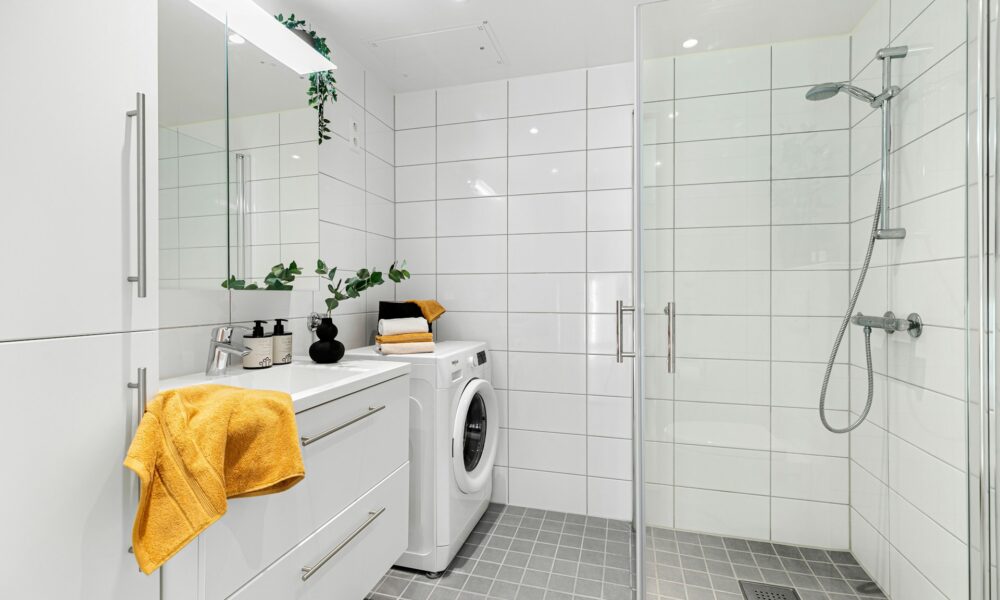Have you ever stepped into your shower expecting a refreshing blast of water, only to be greeted by a weak trickle that barely rinses the shampoo from your hair? Or perhaps you’ve noticed that filling a pot for dinner takes considerably longer than it used to? These frustrating experiences often point to water pressure issues in your home.
Water pressure affects every aspect of your daily routine, from morning showers to washing dishes and doing laundry. When it’s working properly, you barely notice it. When it’s not, every water-related task becomes a test of patience. Understanding how water pressure works in your home can help you identify problems early and know when to call for professional help.
Many homeowners assume that low water pressure is simply something they have to live with, but this isn’t always the case. By learning about the factors that influence water flow and pressure regulation, you can take steps to improve your home’s water system performance and enjoy the convenience of proper water pressure throughout your house.
What Is Water Pressure and How Does It Work?
Water pressure refers to the force that pushes water through your home’s plumbing system. It’s measured in pounds per square inch (PSI), and most homes function best with water pressure between 40 and 60 PSI. Think of it as the invisible force that drives water from your main supply line through pipes, fixtures, and appliances.
Your home’s water pressure depends on several factors, including the height of your local water tower, your elevation relative to the water source, and the condition of your plumbing system. Municipal water systems typically maintain pressure between 30 and 80 PSI, but this can vary significantly based on your location and local infrastructure.
The Role of Gravity and Elevation
Gravity plays a crucial role in water pressure. Water naturally flows from high to low elevations, which is why water towers are built at elevated positions. If your home sits on a hill or several stories above the main water line, you might experience lower pressure than neighbors at lower elevations.
Municipal vs. Well Water Systems
Homes connected to municipal water systems rely on the city’s pressure regulation, while well water systems use pressure tanks and pumps to maintain consistent flow. Each system has unique characteristics that affect how pressure issues should be addressed.
Common Signs of Low Water Pressure
Recognizing the symptoms of low water pressure can help you address problems before they worsen. Some issues are immediately obvious, while others develop gradually over time.
Immediate Indicators
The most noticeable sign is weak water flow from faucets, showerheads, or appliances. You might find that it takes significantly longer to fill a bathtub, or that multiple fixtures running simultaneously result in dramatically reduced flow to each outlet.
Gradual Changes
Sometimes, low water pressure develops slowly as mineral deposits build up in pipes or fixtures age. You might notice that your washing machine takes longer to fill, or that your dishwasher isn’t cleaning as effectively as it once did.
Inconsistent Performance
Water pressure that varies throughout the day can indicate problems with your municipal supply or issues with your home’s plumbing system. Morning and evening hours often see increased demand, which can affect pressure in some areas.
Factors That Affect Water Flow in Your Home
Several elements within your home’s plumbing system can impact water flow and pressure. Understanding these factors helps you identify where problems might originate.
Pipe Material and Age
Older homes with galvanized steel pipes often experience pressure loss as the pipes corrode and develop mineral buildup internally. Modern copper and PEX pipes typically maintain better flow characteristics over time.
Pipe Diameter and Layout
The size of your pipes affects the flow rate. Smaller diameter pipes restrict flow, while larger pipes allow more water to pass through. The layout of your plumbing system also matters – long pipe runs and multiple bends can reduce pressure.
Fixture and Appliance Condition
Clogged aerators, old showerheads, and malfunctioning appliances can create the illusion of low water pressure when the actual problem lies with the fixture itself rather than your home’s water supply.
The Pressure Regulator: Your Home’s Water Traffic Controller
A pressure regulator is a bell-shaped device typically located near where your main water line enters your home. This crucial component controls the water pressure throughout your house, ensuring it stays within safe and functional limits.
How Pressure Regulators Work
The pressure regulator reduces incoming water pressure from the municipal supply to a level that’s safe for your home’s plumbing system. Without proper regulation, high pressure can damage pipes, fixtures, and appliances while also wasting water.
Signs of Regulator Problems
When a pressure regulator fails, you might experience either extremely high or extremely low water pressure. High pressure can cause pipes to bang, fixtures to leak, or appliances to malfunction. Low pressure after regulator failure usually indicates the device is restricting flow too much.
Maintenance and Replacement
Pressure regulators typically last 10-15 years, but can fail sooner in areas with hard water or poor water quality. Regular inspection by a qualified plumber can help identify potential issues before they affect your entire water system.
Troubleshooting Water Pressure Problems
Before calling for professional help, there are several steps you can take to diagnose and potentially resolve water pressure issues.
Simple Diagnostic Steps
Start by checking if the problem affects your entire house or just specific fixtures. Test water pressure at multiple locations, including sinks, showers, and outdoor spigots. This helps determine whether you’re dealing with a whole-house issue or localized problems.
Fixture-Specific Solutions
Clean clogged aerators and showerheads by soaking them in vinegar overnight. Replace old or damaged fixtures that might be restricting flow. Sometimes what appears to be a pressure problem is a fixture maintenance issue.
Checking for Leaks
Hidden leaks can significantly impact water pressure throughout your home. Look for signs of water damage, unusually high water bills, or the sound of running water when no fixtures are in use.
When to Call Shaw Plumbing Services
While some water pressure issues can be resolved with basic troubleshooting, many problems require professional expertise and specialized tools.
Complex System Issues
If your water pressure problems affect multiple fixtures or seem to be getting worse over time, it’s time to call Shaw Plumbing Services. Professional plumbers have the experience and equipment to diagnose complex issues like failing pressure regulators, corroded pipes, or problems with your main water line.
Safety Considerations
Working with water pressure systems can be dangerous if you’re not properly trained. High pressure can cause serious injuries, and incorrect repairs can lead to flooding or expensive damage. Professional plumbers understand these risks and have the proper safety equipment and training.
Warranty and Long-Term Solutions
Shaw Plumbing Services provides warranties on their work and can recommend long-term solutions that address the root cause of your water pressure problems rather than just treating symptoms. This approach often saves money and prevents future issues.
Optimizing Your Home’s Water System
Understanding your home’s water pressure empowers you to maintain better performance and catch problems early. Regular maintenance, timely repairs, and professional inspections can keep your water system functioning optimally for years to come.
Remember that water pressure issues rarely improve on their own. Whether you’re dealing with a simple clogged aerator or a complex pressure regulator problem, addressing the issue promptly prevents more serious and expensive problems down the road. When in doubt, consulting with Shaw Plumbing Services ensures you get expert advice and professional solutions tailored to your specific situation.




